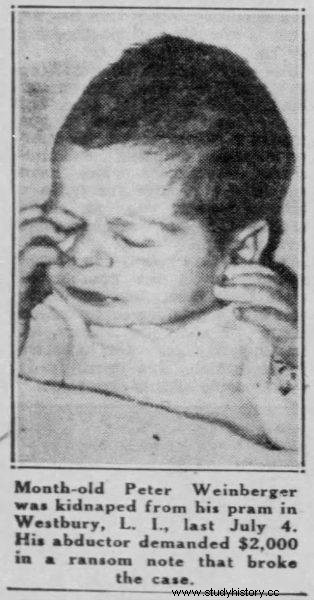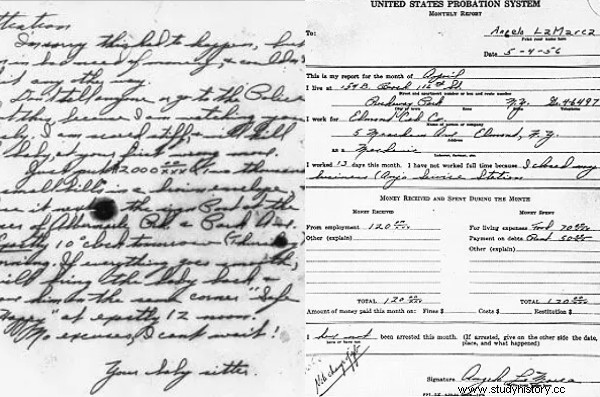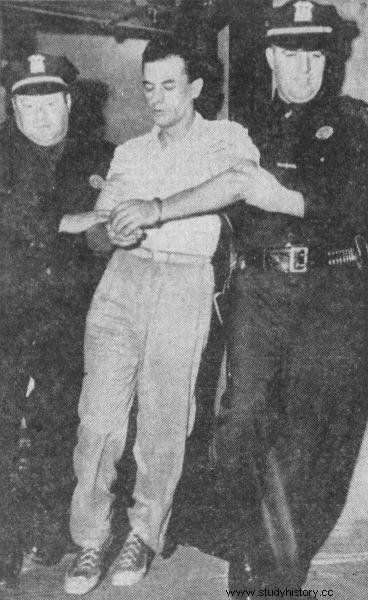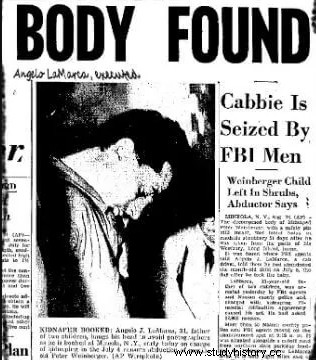On July 4, 1956, the one-month-old Peter Weinberger disappeared from a pram placed on the terrace in front of the house. The hijacker demanded a ransom of $ 2,000 but did not collect it.
The kidnapping of a newborn from the terrace of his family's Long Island home shocked America. The abduction of a one-month-old boy was immediately hailed as "the crime of the century." It was only over a month later that it became clear what a terrible fate befell him.
Atypical victim
Peter Weinberger was born in early June 1956. On July 4th, when the boy was only a month old, his mother, Betty, wrapped him in a blanket and put him in a pram standing on the terrace of their family home. Her son was napping, so the woman left him alone for about 10 minutes. Nothing foreshadowed the tragedy. The Weinbergers lived in the suburbs - in the quiet town of Westbury on Long Island, New York. They lived the ordinary life of the middle class. They weren't rich like the Lindberghs whose son was kidnapped for ransom on March 1, 1932.

Peter Weinberger was only one month old when he was kidnapped
So when, after less than a quarter of an hour, Betty Weinberger came out on the terrace and saw an empty cart, she was shocked. Panicked and bewildered, the woman noticed that whoever had taken her child had left a ransom note . The Weinbergers were supposed to pay just $ 2,000 to get the boy back. But that wasn't the strangest thing about this…
The kidnapper ... apologizes
A handwritten note that Betty found in the cart read:
Attention! I'm sorry it came to this, but I desperately need the money and I couldn't get it any other way. Don't tell anyone and don't inform the police because I'm watching you closely . I am scared and will kill the baby if you do something wrong . Just put $ 2,000 in low-denomination notes in a brown envelope ... If everything goes smoothly, I will give you the baby safe and sound. I will bring them to the same place [leaving the ransom - ed. Ed.] exactly at noon. No excuses. I am waiting impatiently. Your nanny.
The kidnapper demanded that the Weinbergers put the envelope with the money next to a signpost near their house by 10 am the following day at the latest.

Ransom-demand note and document from which the hijacker was identified
When Peter's father, Morris Weinberger, returned home with his older son, 2-year-old Lewis, the Weinbergers decided to notify the police . Detective Frank Abramowitz, who was the first to arrive at the scene of the crime, advised his parents to agree to pay the ransom. A married couple, with the help of their relatives, managed to raise an amount that, although relatively small, exceeded their financial capacity. Police officers wiretapped the Weinbergers' phone in case the kidnapper decides to contact them. They also demanded that the local press not to disclose information to the public for Peter's safety about kidnapping.
Bad press
Most of the editorial offices complied with the request - except for one. The New York Daily News wrote about a newborn abduction on the front page of the July 4 evening issue. The case immediately got loud. By the next morning, the area around the Weinberger house was swarming with journalists and reporters. However, the kidnapper did not show up. Probably the crowds of people in the vicinity scared him away, so he resigned from collecting the ransom.
He was silent for the next few days. On July 10, six days after the kidnapping, he called the Weinbergers twice to leave additional instructions on where to put the money. Even though Betty and Morris followed his directions carefully, he again failed to come for the ransom. Interestingly, in the second location he indicated, the policemen found a blue bag with another handwritten note written in the same handwriting what the first letter. The kidnapper reiterated his demands and revealed where the parents would find the child "if everything goes smoothly".
The FBI steps in
It took another day for the FBI to take over. The laws of the time required a seven-day waiting period before federal agents were involved in kidnapping cases. The investigators had only two ransom-demand notes . Graphological analysis confirmed that were drawn with the same hand . There was no more evidence.

The kidnapper turned out to be Angelo LaMarca
In the hope of identifying the kidnapper, experts from the FBI lab in Washington were called in to teach New York agents the basics of handwriting analysis. Then the detectives got down to work. They had to examine a huge number of samples stored, among others through the New York State Bureau of Vehicles, federal and state probation offices, schools, and other institutions. After reviewing and eliminating nearly 2 million (!) documents On August 22 - almost two months after the kidnapping - they finally found the trail. One agent saw a similarity between the handwriting in the notes and the handwriting of a man named Angelo LaMarc.
Before the breakthrough in the investigation took place, the Weinbergers had received several other ransom demands from people who wanted to get rich from their misfortune. As a result, five people unrelated to the case were detained. Only the sixth arrest, on August 23, 1956, was the right one.
Although LaMarca initially denied having had any involvement in the kidnapping of baby Peter, when confronted with the graphologist's opinion, he confessed to the crime. As he explained, he abducted the boy "on impulse" because he was drowning in debts which he was unable to pay. He worked as a taxi dispatcher and driver. He had a wife and two children to support. On July 4, he was wandering around Westbury, wondering where to get the money, when he saw Betty stacking the newborn in the stroller and entering the house. Without thinking, he wrote a ransom note, took the boy from the terrace and drove off.
The tragic end of the search
The man told the policemen what happened to Peter. He assured that he really wanted to give the child back to his parents safe and sound . The day after the kidnapping, with the boy in the car, he arrived at the ransom receipt site. However, he got scared of the crowd of journalists and policemen in the area and drove away. As he said himself - he panicked. He decided to get rid of the trouble. He abandoned his newborn in a wooded area near a nearby highway exit and came home. When he left the baby among the trees, was still alive .
When asked why he kidnapped Peter, he replied that he got into debt by buying a refrigerator and new windows for the house. He was also behind on car bills.

Article describing the finding of Peter's body
Policemen and FBI agents immediately began to search the area he had indicated. On the morning of August 24, one of the search team noticed a shiny object - it turned out to be a safety pin with which the mother had fastened the newborn's diaper. The child's body was in a state of decay, but the pathologist managed to establish that the cause of death was starvation and hypoxia . The forensic expert later testified that the agony was probably lengthy. The boy abandoned in the forest could live for a few more days.
Crime and Punishment
Angelo LaMarca was charged with kidnapping and murder. His lawyer tried to prove to the court that at the time of Peter's abduction and when he was abandoning the boy in the forest, he was temporarily insane. On December 7, 1956, the sentence was passed. The jury did not believe the kidnapper's madness and found him guilty of all the charges against him. The penalty for murder in New York State was death at the time. The judge scheduled the execution on January 28 of the following year.
LaMarca has appealed the sentence several times. He was supported by his wife, Donna, who told reporters:- I can't believe my husband is going to die. How can they send a madman to the electric chair? No man who is a father would allow another child to die unless he was crazy. Ultimately, Angelo was executed on August 7, 1958 at Sing Sing Prison.
The Peter Weinberger case received wide publicity in the United States. It also forced the American authorities to change the regulations introduced after the kidnapping of the Lindbergh child in 1932. It allowed me to join the search for FBI agents seven days after the abduction. Following the death of a Long Island infant, the waiting time for federal office intervention was reduced to 24 hours. The truth is that if the law had already been in force in July 1956, baby Peter would probably not have been saved. However, another change in this respect was made only in 1998.
Bibliography:
- S. Ruesch, Crime of the Century:The Kidnapping of Peter Weinberger , HeinOnline (accessed on:20/03/2022).
- Weinberger Kidnapping , FBI.gov (accessed:20/03/2022).
- Weinberger Kidnapping Is Confessed by L.I. Man, Special to "The New York Times", Aug. 24, 1956 (access:20/03/2022).
